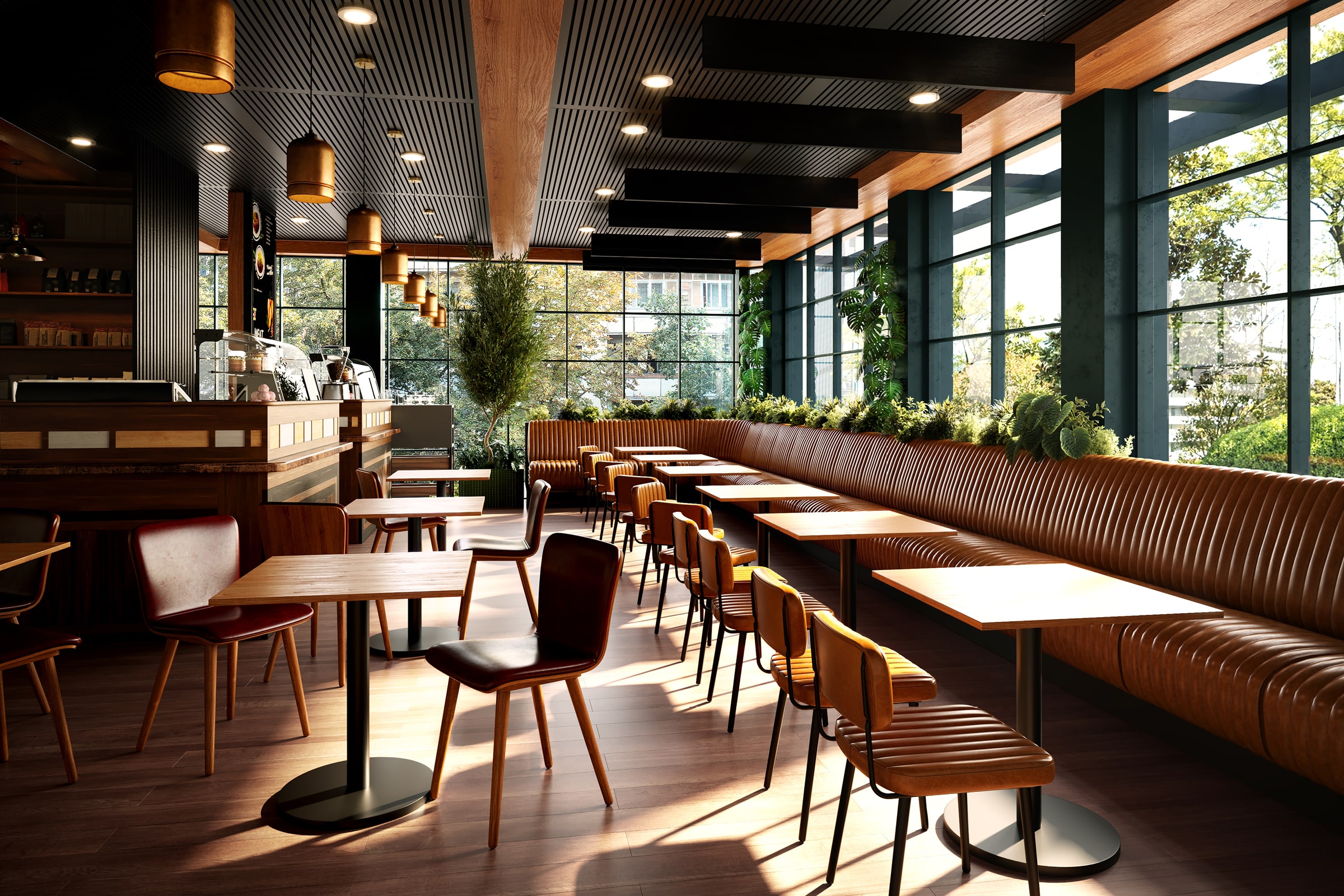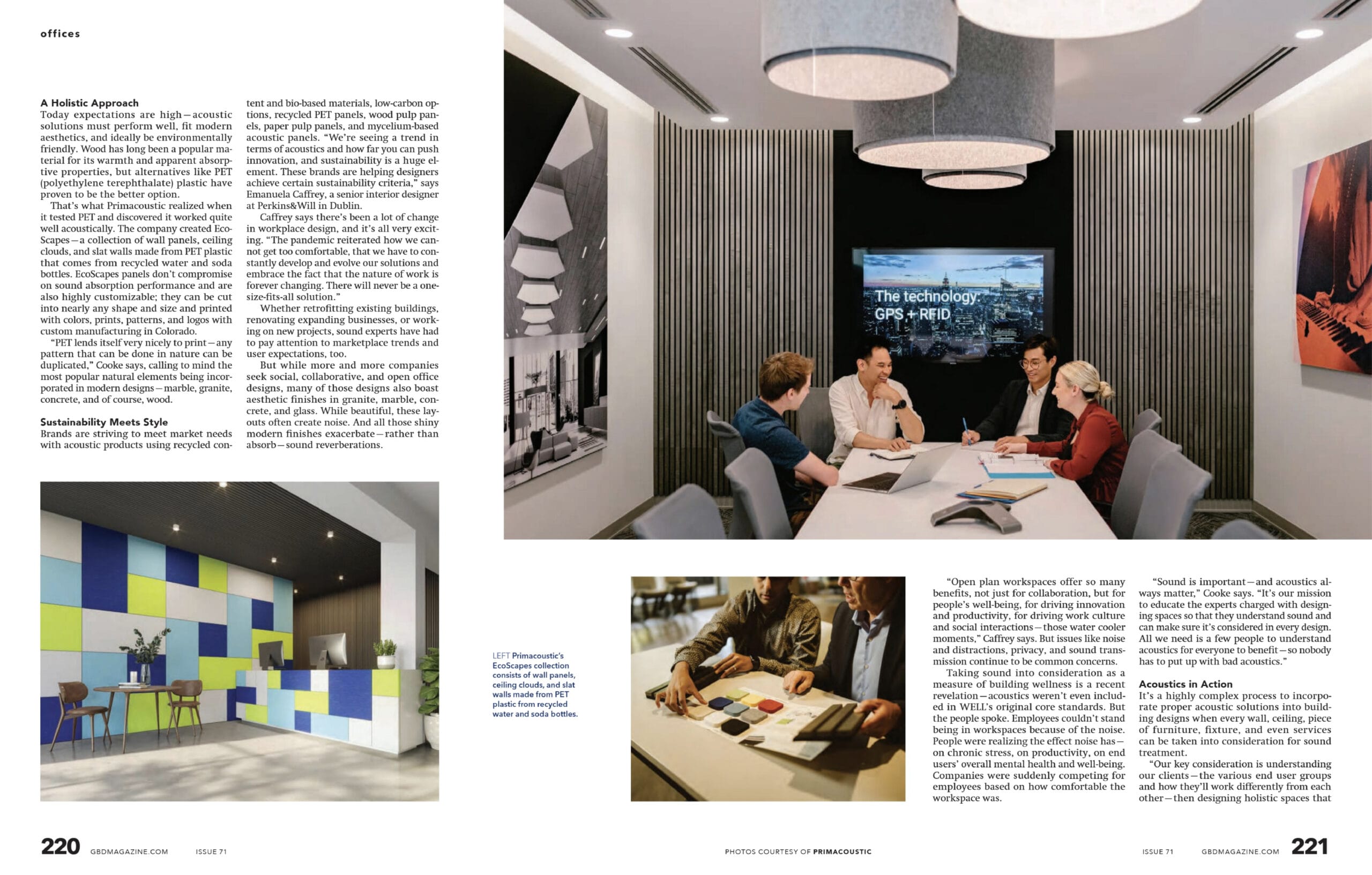Acoustics are no longer an afterthought, as design teams seek sound solutions that are functional, flexible, and environmentally friendly.
We’ve all been there-in the office on an important call, desperately trying to drown out the workspace cacophony so we can hear the person on the other end.
“People don’t necessarily understand the physics behind acoustics because you can’t see them, but everyone knows bad acoustics,” says Rob Cooke, managing director of Primacoustic, a top acoustic solutions company for more than 20 years. While acoustics have not always been at the forefront of design conversations, modern spaces are considering sound in innovative ways.

A Holistic Approach
Today expectations are high—acoustic solutions must perform well, fit modern aesthetics, and ideally be environmentally friendly. Wood has long been a popular material for its warmth and apparent absorptive properties, but alternatives like PET (polyethylene terephthalate) plastic have proven to be the better option.
That’s what Primacoustic realized when it tested PET and discovered it worked quite well acoustically. The company created EcoScapes—a collection of wall panels, ceiling clouds, and slat walls made from PET plastic that comes from recycled water and soda bottles. EcoScapes panels don’t compromise on sound absorption performance and are also highly customizable; they can be cut into nearly any shape and size and printed with colors, prints, patterns, and logos with custom manufacturing in Colorado.
“PET lends itself very nicely to print—any pattern that can be done in nature can be duplicated,” Cooke says, calling to mind the most popular natural elements being incorporated in modern designs—marble, granite, concrete, and of course, wood.

Sustainability Meets Style
Taking sound into consideration as a measure of building wellness is a recent revelation—acoustics weren’t even included in WELL’s original core standards. But the people spoke. Employees couldn’t stand being in workspaces because of the noise. People were realizing the perfect nose has—on chronic stress, on productivity, on end users’ overall mental health and well-being. Companies were suddenly competing for employees based on how comfortable the workspace was.
“Sound is important—and acoustics always matter,” Cooke says. “It’s our mission to educate the experts charged with designing spaces so that they understand sound and can make sure it’s considered in every design. All we need is a few people to understand acoustics for everyone to benefit—so nobody has to put up with bad acoustics.”

Acoustics in Action
It’s a highly complex process to incorporate proper acoustic solutions into building designs when every wall, ceiling, piece of furniture, fixture, and even services can be taken into consideration for sound treatment.
“An acoustic finish can have so many functions and different elements. It can address privacy, it can bring biophilia and sustainability, it can address wellness. Some of the products and innovations we’re seeing address that multi-need very well,” says Emanuela Caffrey, a senior interior designer at Perkins&Will in Dublin.

Published by GB&D Magazine












